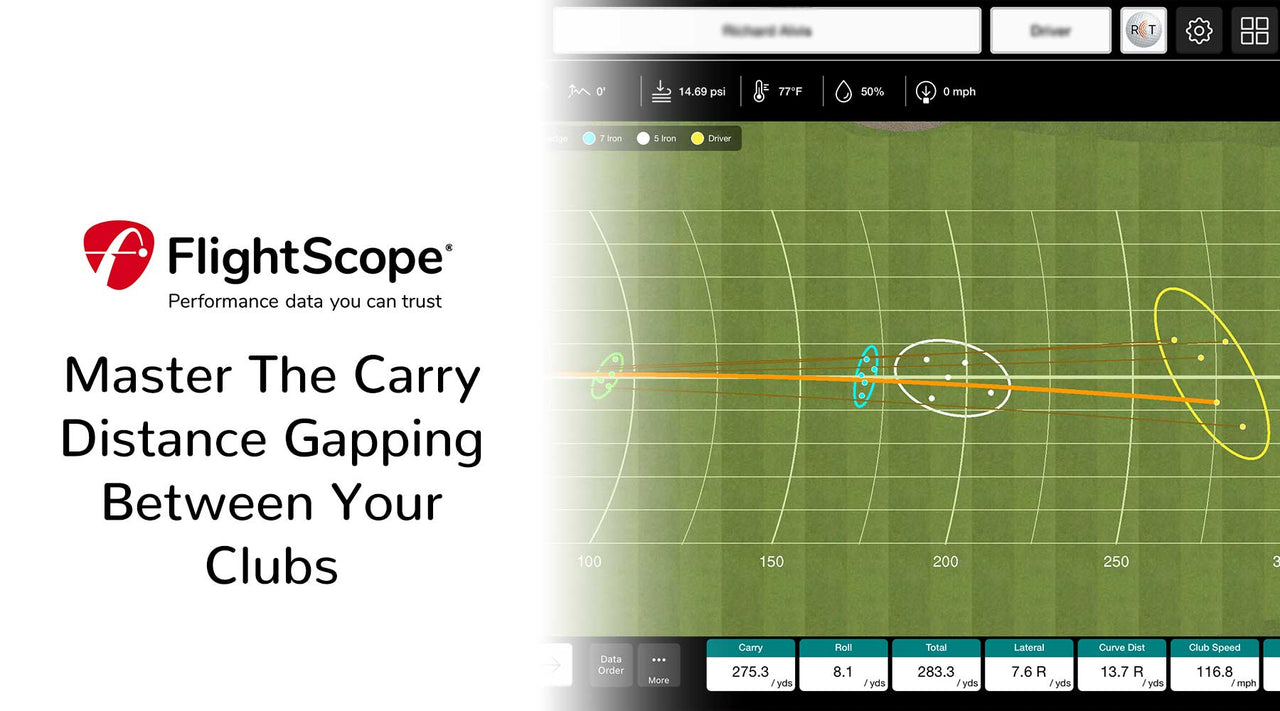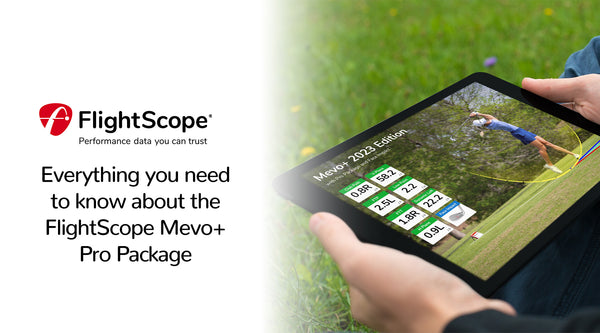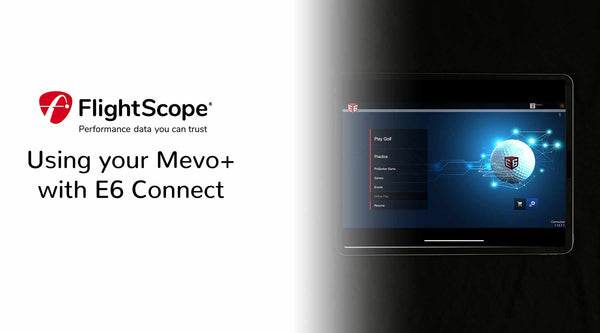Out comes your rangefinder, and you shoot the distance to the flag. You now know the distance to the flag, but do you know the carry distance you hit each golf club in your bag?
If not, you cannot make an informed club selection with the most important shot in gaining strokes and lowering your score...proximity to hole. To get a good grip on how far you hit each club in your bag, it is essential to own an accurate tracking device from the FlightScope range of units. The entry-level version is the pocket-sized FlightScope Mevo. For more data and features, including simulation, there are the FlightScope Mevo+ and the top-of-the-range, full-tracking FlightScope X3.

Apart from knowing the carry distances you hit every club in your bag, it is also advantageous to know the carry yardage differences between the clubs. This is known as carry distance gapping, and this is where having a FlightScope device on the practice range is the answer to capturing accurate carry distance data.

Don’t overlook your club gapping. Improving this will not only build your confidence, but it will also improve your club selection and your scores. Club gapping is one of the most overlooked aspects of club performance throughout the set of clubs.
During a “gapping” session on the practice range, you should hit around 10 shots with each club in your bag. In your analysis of these shots, eliminate the outliers to create a more representative average carry distance for each club, a carry distance you can count on in competition. Knowing these carry distances is also valuable in club selection to clear or play short of water hazards, bunkers and other problem areas. Typically, you should be looking for about 10 to 15 yards between clubs.

The data captured from gapping sessions are also helpful in identifying slight swing differences that can cause gapping inconsistencies. For example, spin rate does impact how far the ball carries through the air. By identifying spin rate inconsistencies, you can, in collaboration with your coach, develop a more focused practice plan to improve impact positions for better spin consistency.
Gapping performance data is also useful for club fitters to adjust and finetune the lofts, lie angles and shaft lengths of your clubs to ensure better gapping consistency between your clubs.
You are allowed 14 clubs in your bag. Are you maximizing these clubs by knowing the average carry distance you hit each club and the gapping between these 14 clubs in your bag? Without this vital knowledge, you are playing a guessing game and not a smart game. Choose to distance gap your clubs today and play better golf. Use FlightScope performance data tracking technology to help you accurately measure your club gap distances.
- Club distance gapping is important.
- Verify your club gapping at least twice a year.
- Remember to redo your club distance gapping when you get new clubs.
Distance gapping your golf clubs is perhaps the most overlooked and easiest thing you can do to improve your game. It does not require swing changes, only accurate club performance data and club adjustments by a club fitter.
Maximize your playing potential by distance gapping your golf clubs in collaboration with your coach and a club fitter. FlightScope can help you practice and play with purpose and performance data you can trust.




